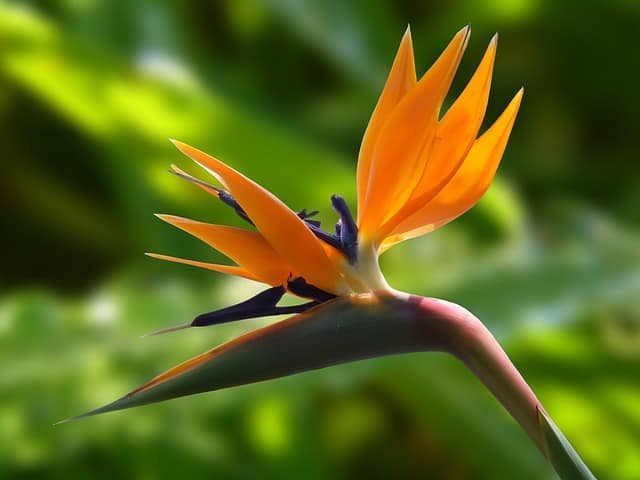Bird of Paradise is a beautiful tropical plant that is popular for its large, vibrant flowers and striking foliage. However, if you notice the bottom leaves of your Bird of Paradise turning yellow, it could be a sign of an underlying issue. While a few yellowing leaves are normal for any plant, excessive yellowing can be a cause for concern.
Understanding the causes of yellowing leaves on Bird of Paradise is crucial for maintaining its health and beauty. Common causes of yellowing leaves include overwatering, underwatering, nutrient deficiencies, mineral deposits, pests, and diseases.
Additionally, factors such as sunlight and temperature, soil and drainage, and fertilization strategies can also affect the plant’s health. By identifying the cause of yellowing leaves, you can take the necessary steps to prevent further damage and promote new growth.
Key Takeaways
- Yellowing leaves on Bird of Paradise can be a sign of an underlying issue.
- Common causes of yellowing leaves include overwatering, underwatering, nutrient deficiencies, mineral deposits, pests, and diseases.
- Identifying the cause of yellowing leaves is crucial for maintaining the plant’s health and promoting new growth.
You will also like:
- Beet Leaves Turning Yellow:
- Bottom Corn Leaves Turning Yellow:
- Basil Leaves Turning Yellow with Brown Spots
Understanding Bird of Paradise
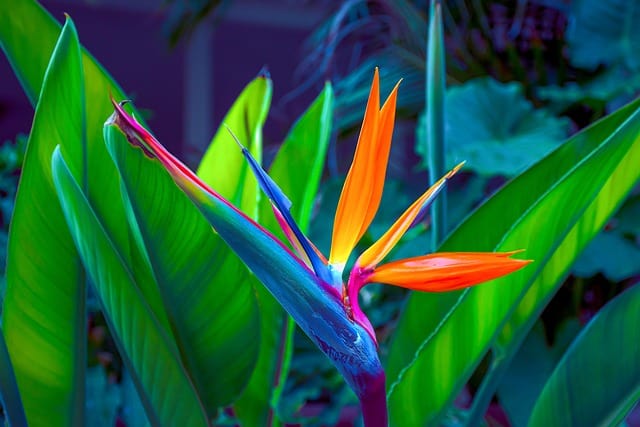
Bird of Paradise, also known as Strelitzia, is a tropical plant with large, glossy leaves and unique, bird-like flowers. It is a popular houseplant, prized for its stunning appearance and low maintenance requirements. However, like all plants, Bird of Paradise can experience some issues, such as yellowing leaves.
Bird of Paradise leaves turning yellow can be an indication of several problems, including overwatering, underwatering, nutrient deficiencies, pests, and diseases. Understanding the causes of yellowing leaves is crucial to restoring the plant’s health.
One of the most common causes of yellowing leaves in Bird of Paradise is improper watering. Overwatering can lead to root rot, which prevents the plant from absorbing nutrients properly, causing the leaves to turn yellow. On the other hand, underwatering can cause the plant to become dehydrated, leading to yellowing leaves.
Another factor that can cause yellowing leaves in Bird of Paradise is nutrient deficiencies. The plant requires a balance of nutrients, including iron, magnesium, and zinc, to thrive. A lack of these nutrients can cause the leaves to turn yellow.
In addition to watering and nutrient issues, pests and diseases can also cause yellowing leaves in Bird of Paradise. Common pests include spider mites, mealybugs, and scale insects, while diseases such as leaf spot and root rot can also lead to yellowing leaves.
Identifying Yellowing Leaves
Yellowing leaves on a Bird of Paradise plant can be a sign of various issues. It is important to identify the cause of the yellowing to take appropriate action and prevent further damage. This section will cover the different causes of yellowing leaves and how to identify them.
1. Disease and Pests
Diseases and pests can cause yellowing leaves on a Bird of Paradise plant. Some common pests that can cause yellowing leaves include spider mites, mealybugs, and aphids.
These pests can cause leaves to turn yellow and may also leave a sticky residue on the plant. To identify if pests are the cause of yellowing leaves, check the leaves and stems for visible signs of infestation.
Diseases such as root rot and fungal infections can also cause yellowing leaves. To identify if disease is the cause of yellowing, check the roots for any signs of rot or discoloration. If the roots are healthy, check the leaves for any visible signs of fungal growth.
2. Nutrient Deficiency
Nutrient deficiency can also cause yellowing leaves on a Bird of Paradise plant. A lack of nutrients such as nitrogen, magnesium, and iron can cause leaves to turn yellow. To identify if nutrient deficiency is the cause of yellowing leaves, check the soil pH and nutrient levels. A soil test can help determine if the soil is lacking in any essential nutrients.
3. Environmental Factors
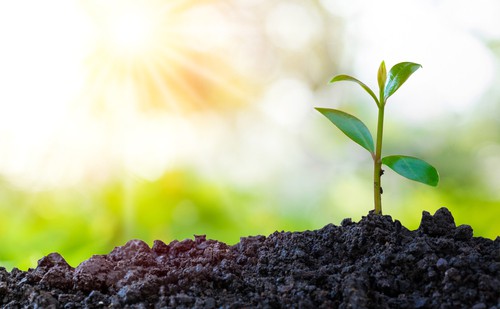
Environmental factors such as overwatering, underwatering, and exposure to extreme temperatures can cause yellowing leaves on a Bird of Paradise plant. Overwatering can cause root rot and lead to yellowing leaves.
Underwatering can cause the plant to become dehydrated and also lead to yellowing leaves. Exposure to extreme temperatures can cause stress to the plant and result in yellowing leaves.
To identify if environmental factors are the cause of yellowing leaves, check the soil moisture levels and the temperature and humidity levels in the plant’s environment. Adjust watering and temperature as necessary to prevent further damage..
Common Causes of Yellowing Leaves
Yellowing leaves on a bird of paradise plant can be a sign of stress or disease. Understanding the common causes of yellowing leaves can help you identify and address the problem before it becomes too severe.
Overwatering is one of the most common causes of yellowing leaves in a bird of paradise. When the soil is too wet, the roots can become waterlogged and begin to rot. This can lead to a lack of oxygen and nutrients, which can cause the leaves to turn yellow and eventually fall off.
To avoid overwatering, make sure the soil is well-draining and that the plant is not sitting in standing water.
On the other hand, underwatering can also cause yellowing leaves. When the soil is too dry, the plant can become stressed and the leaves can turn yellow and brown. To prevent this, make sure to water your bird of paradise regularly and keep the soil moist but not waterlogged.
Sunlight is another factor that can cause yellowing leaves in a bird of paradise. Too much direct sunlight can cause the leaves to burn and turn yellow or brown. On the other hand, too little sunlight can cause the plant to become weak and the leaves to turn yellow. Make sure to place your bird of paradise in a location with bright, indirect sunlight.
Humidity can also play a role in the health of your bird of paradise. Low humidity can cause the leaves to turn yellow and brown, while high humidity can lead to fungal diseases. To maintain the proper humidity level, consider using a humidifier or placing a tray of water near the plant.
Soil and drainage can also affect the health of your bird of paradise. The plant prefers well-draining soil that is rich in nutrients. If the soil is too compacted or lacks nutrients, the plant may become stressed and the leaves may turn yellow. Additionally, make sure that the pot has drainage holes to prevent water from accumulating in the bottom of the pot.
Temperature changes and drafts can also cause the leaves to turn yellow. The plant prefers a consistent temperature between 60-70°F (15-21°C) and does not tolerate sudden temperature changes or drafts.
Role of Nutrients and Minerals
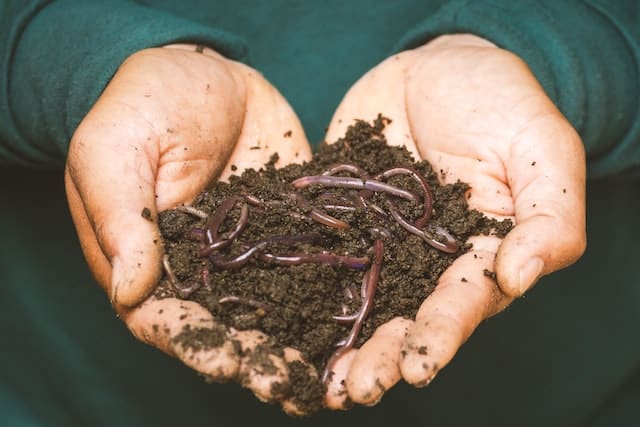
Yellowing bottom leaves in bird of paradise plants can be caused by a lack of essential nutrients. Nutrients such as iron, nitrogen, zinc, magnesium, phosphorus, and sulfur are all necessary for healthy plant growth. If the plant is not receiving enough of these essential nutrients, it may start to show signs of deficiency, including yellowing leaves.
One way to address this issue is by providing the plant with the necessary nutrients. This can be done through the use of fertilizers or by adding specific minerals to the soil. For example, adding Epsom salt or dolomite can help to provide magnesium and calcium, respectively, which are both important minerals for plant growth.
Another way to ensure that the plant is receiving enough nutrients is by using a zinc chelate. Zinc is an important mineral for plant growth, and a lack of zinc can lead to yellowing leaves. By using a zinc chelate, the plant can absorb the necessary zinc more easily, helping to prevent yellowing leaves.
It’s important to note that while providing the plant with essential nutrients can help to prevent yellowing leaves, it’s also important not to over-fertilize. Over-fertilizing can lead to nutrient burn and other issues, which can be just as damaging to the plant as a lack of nutrients.
It’s important to follow the instructions on the fertilizer package and to avoid using too much fertilizer.
Watering and Humidity Requirements
Bird of Paradise plants have specific watering and humidity requirements to thrive. The plant is native to the tropical regions of South Africa and needs a humid environment to grow well. The following paragraphs provide valuable information regarding watering and humidity requirements for the Bird of Paradise plant.
Watering Requirements
The Bird of Paradise plant needs to be watered regularly, but overwatering can lead to yellowing of the leaves. It is essential to ensure that the soil is moist but not wet. Overwatering can cause root rot, which can be fatal to the plant. The frequency of watering depends on the humidity levels and the temperature of the environment.
It is recommended to water the plant when the top inch of the soil is dry. When watering, it is essential to ensure that the water is not too cold, as this can shock the plant. Filtered water or rainwater is recommended, as tap water may contain chemicals that can harm the plant.
Humidity Requirements
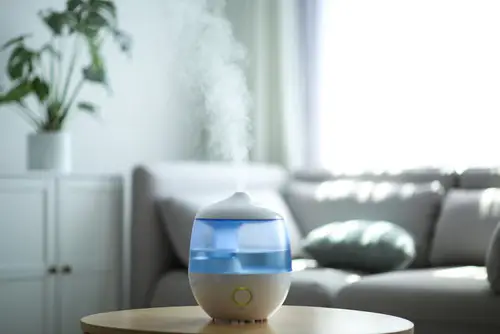
Bird of Paradise plants require high humidity levels to grow well. The ideal humidity level for the plant is between 50% and 60%. If the humidity level is too low, the leaves may turn yellow and brown. To increase humidity levels, the plant can be misted regularly with water or placed on a tray of pebbles and water.
It is also recommended to avoid placing the plant near air conditioning or heating vents, as this can reduce humidity levels and cause the leaves to dry out. If the environment is particularly dry, a humidifier can be used to increase humidity levels.
Understanding Soil and Drainage
When it comes to bird of paradise plants, soil and drainage are two crucial factors to consider. The plant requires well-draining soil that allows water to pass through quickly, preventing the roots from sitting in water for too long. If the soil is too dense, it can lead to root rot, which can cause the bottom leaves to turn yellow and wilt.
Bird of paradise plants prefer slightly acidic to neutral soil with a pH range of 5.5 to 7.0. The soil should hold some water, but also allow for aeration and drainage. A recommended soil mix for bird of paradise plants is a combination of two parts peat moss, one part perlite, one part bark fines, and one part compost.
It is essential to ensure that the soil is not too wet or too dry, as both conditions can cause the bottom leaves to turn yellow. Overwatering is a common cause of yellowing leaves, as it can lead to root rot. On the other hand, underwatering can also cause the leaves to turn yellow and dry out.
If the soil is too dense and does not allow for proper drainage, it can also lead to yellowing leaves. Mineral deposits can accumulate in the soil, causing a nutrient deficiency that can lead to yellowing leaves. In this case, it is recommended to flush the soil with water to remove any mineral buildup.
Dealing with Pests and Diseases
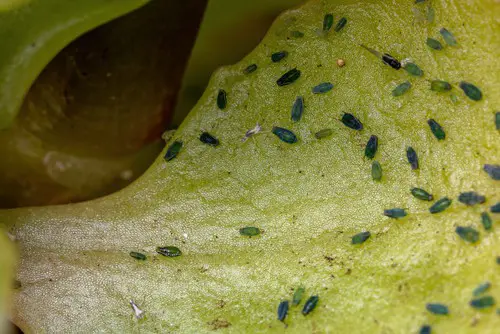
Yellowing of bottom leaves in bird of paradise plants can sometimes be caused by pests and diseases. Common pests that affect bird of paradise plants include aphids, whiteflies, spider mites, and scale insects. These pests can cause damage to the leaves, leading to yellowing and even death of the plant.
One effective way of dealing with pests is to use neem oil. Neem oil is a natural insecticide that is effective against a wide range of pests. It works by disrupting the feeding and reproductive systems of the pests, preventing them from causing further damage to the plant. To use neem oil, mix it with water and spray it on the affected parts of the plant.
Another way of dealing with pests is to use chamomile. Chamomile is a natural insecticide that is effective against aphids, whiteflies, and spider mites. To use chamomile, steep a handful of chamomile flowers in a gallon of water for an hour. Strain the mixture and spray it on the affected parts of the plant.
Scale insects can be removed by using a cotton swab dipped in alcohol. Gently rub the cotton swab on the affected parts of the plant to remove the scale insects.
Fungal diseases can also cause yellowing of bottom leaves in bird of paradise plants. One common fungal disease is Botrytis blight. This disease is caused by a fungus that thrives in humid conditions. To prevent Botrytis blight, avoid over-watering the plant and ensure that the soil is well-draining. If the plant is already infected, use a fungicide to treat it.
Opogona crown borer is another pest that affects bird of paradise plants. This pest burrows into the stem of the plant and causes damage to the crown. To prevent opogona crown borer, use activated charcoal to protect the stem. Activated charcoal can be mixed with water and applied to the stem of the plant to create a protective barrier.
Cinnamon can also be used to prevent fungal diseases. Cinnamon has antifungal properties that can prevent the growth of fungi. To use cinnamon, sprinkle it on the soil around the plant.
The Importance of Sunlight and Temperature
Bird of Paradise plants require a significant amount of sunlight to thrive. They prefer full sun to light shade when growing outside, and indoor plants require bright, indirect light. Lack of sunlight can cause the bottom leaves of the plant to turn yellow and eventually fall off.
However, too much light can also be harmful to the plant. Excessive light exposure can cause the leaves to become scorched and turn yellow. It is essential to shield young plants from midday summer sun, especially if they are placed in south-facing windows. Rooms with only north-facing windows are not considered suitable for Bird of Paradise plants.
Temperature is also an essential factor in the growth of Bird of Paradise plants. They prefer a warm and humid atmosphere, with temperatures ranging from 60°F to 70°F. If the temperature drops below 50°F, the plant may become stressed and show signs of yellowing leaves.
Grow lights can be used to supplement natural light and provide the plant with the necessary light requirements. However, it is essential to ensure that the grow lights are not too close to the plant, as this can cause the leaves to become scorched and turn yellow.
Repotting and Transplanting

Repotting and transplanting can be a solution to bird of paradise bottom leaves turning yellow. Repotting is the process of moving the plant to a larger pot, while transplanting involves moving the plant to a different location. Both methods can be stressful for the plant and may cause transplant shock, which can lead to yellowing leaves.
It is recommended to repot or transplant bird of paradise during the growing season, which is spring or summer. Before repotting or transplanting, the plant should be watered thoroughly to prevent the roots from drying out during the process.
During repotting, the old potting soil should be removed, and the roots should be inspected for any signs of damage or disease. Any dead or rotting roots should be trimmed off, leaving only the healthy roots. The plant should then be placed in a larger pot with fresh potting soil, and the soil should be gently tamped down around the roots.
Transplanting bird of paradise requires a bit more preparation. The new location should be chosen carefully, taking into consideration the amount of sunlight, humidity, and temperature the plant requires.
The plant should be dug out of the ground, taking care not to damage the roots. Any dead or damaged roots should be trimmed off, and the plant should be placed in the new location, making sure the roots are covered with soil.
After repotting or transplanting, the plant should be watered thoroughly and placed in a shaded area for a few days to recover from transplant shock. It is important not to fertilize the plant immediately after repotting or transplanting, as this can further stress the plant. Instead, wait a few weeks before fertilizing.
Caring for Older Leaves
As Bird of Paradise plants mature, their older leaves may start to turn yellow and die off. This is a natural part of the plant’s aging process and is nothing to be concerned about. However, it is important to take care of these older leaves to ensure the overall health of the plant.
One way to care for older leaves is to prune them off. Pruning can help remove any dead or dying leaves and promote new growth. It is important to use clean and sharp pruning shears to prevent any damage to the plant. Simply cut the leaf stem as close to the base of the plant as possible.
Another way to care for older leaves is to ensure that the plant is receiving proper nutrients. Older leaves may turn yellow due to a lack of nutrients, so it is important to fertilize the plant regularly. Use a balanced fertilizer and follow the instructions on the packaging for best results.
It is also important to ensure that the plant is receiving proper watering. Overwatering or underwatering can cause yellowing of leaves, including the older leaves. Make sure to water the plant when the top inch of soil feels dry to the touch, and ensure that the plant is not sitting in standing water.
Fertilization Strategies
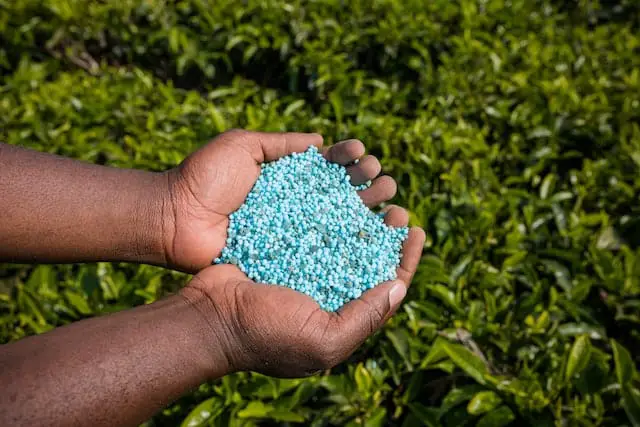
One of the reasons why the bottom leaves of a bird of paradise plant may turn yellow is due to nutrient deficiency. Fertilization is one way to provide the necessary nutrients to the plant.
Before fertilizing, it is important to identify the type of nutrient deficiency that is causing the yellowing of the leaves. A soil test can help determine the specific nutrients that are lacking in the soil.
Once the nutrient deficiency is identified, the appropriate fertilizer can be used to address the issue. Houseplant fertilizers are a good option for bird of paradise plants. These fertilizers are specifically formulated for indoor plants and provide the necessary nutrients in the right amounts.
When fertilizing a bird of paradise plant, it is important to follow the instructions on the fertilizer package carefully. Over-fertilization can lead to fertilizer burn, which can cause the leaves to turn yellow and brown.
To avoid fertilizer burn, it is recommended to dilute the fertilizer to half or quarter strength and apply it once a month during the growing season. During the winter months, fertilization can be reduced to once every two to three months.
In addition to fertilization, it is important to ensure that the plant is getting enough water and light. Proper watering and lighting can help the plant absorb the nutrients from the soil and prevent nutrient deficiencies.
Solutions and Treatments
If the bottom leaves of a Bird of Paradise plant are turning yellow, it is important to diagnose the issue and take appropriate action. Here are some solutions and treatments to consider:
1. Ensure Healthy Foliage
One of the best ways to prevent yellowing leaves is to ensure the plant has healthy foliage. This can be achieved by providing the plant with adequate sunlight, water, and nutrients. The Bird of Paradise plant prefers bright, indirect light, so make sure it is placed in a location that receives plenty of sunlight throughout the day.
Water the plant when the top inch of soil feels dry to the touch, and make sure not to overwater it, as this can cause the roots to become waterlogged and lead to yellowing leaves. Finally, fertilize the plant with a balanced fertilizer every two to three months during the growing season.
2. Address Brown or Black Leaves
If the bottom leaves of the Bird of Paradise plant are turning brown or black, it may be a sign of overwatering or root rot. To address this issue, make sure the soil is well-draining and not waterlogged.
If the soil is too wet, allow it to dry out completely before watering the plant again. If the roots are mushy or black, remove the affected parts and repot the plant in fresh soil.
3. Address Dehydrated or Dry Soil
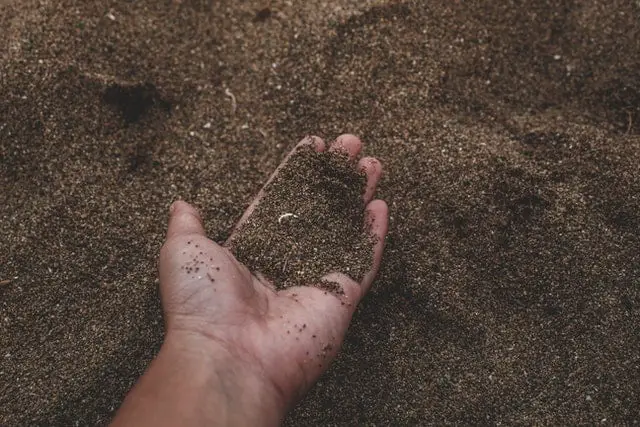
If the bottom leaves of the Bird of Paradise plant are turning yellow and the soil is dry, it may be a sign of dehydration. To address this issue, water the plant deeply and make sure the soil is moist but not waterlogged.
If the soil has dried out completely, soak the pot in a bucket of water for an hour to rehydrate the soil. Mulching the soil can also help retain moisture and prevent the soil from drying out too quickly.
4. Diagnose Pests and Diseases
Yellowing leaves can also be a sign of pests or diseases. Check the plant for signs of pests, such as spider mites or mealybugs, and treat the plant with an appropriate pesticide if necessary. If the plant has a disease, such as fungal leaf spot, remove the affected leaves and treat the plant with a fungicide.
By following these solutions and treatments, the yellowing of the bottom leaves of a Bird of Paradise plant can be addressed and prevented.
Frequently Asked Questions
How do you fix yellow leaves on Bird of Paradise?
Yellow leaves on a Bird of Paradise plant can be fixed by identifying the underlying cause and taking appropriate action. Overwatering, nutrient deficiency, mineral deposits, pests, and underwatering are some of the common reasons for yellow leaves.
To fix the issue, one may need to adjust watering frequency, fertilize the soil, remove mineral deposits, and treat pests.
Why are the bottom of my leaves turning yellow?
The bottom leaves of a Bird of Paradise plant may turn yellow due to various reasons such as overwatering, nutrient deficiency, pests, and old age. Overwatering can cause the roots to rot, leading to yellow leaves.
Nutrient deficiency can cause the leaves to turn yellow, starting from the bottom. Pests such as aphids can also cause yellowing of leaves. Lastly, as the plant ages, the lower leaves may turn yellow and fall off naturally.
Why is my Bird of Paradise leaves turning yellow and curling?
Yellow and curling leaves on a Bird of Paradise plant can be a sign of underwatering or overwatering. Underwatering can cause the leaves to curl and turn yellow, while overwatering can cause the leaves to turn yellow and wilt.
What does an underwatered Bird of Paradise look like?
An underwatered Bird of Paradise plant may have leaves that are curled and wilted, with brown edges and yellow tips. The soil may also be dry, and the plant may appear weak and droopy.
Why are the bottom leaves of my Bird of Paradise turning brown?
The bottom leaves of a Bird of Paradise plant may turn brown due to various reasons such as overwatering, underwatering, and old age. Overwatering can cause the roots to rot, leading to brown leaves. Underwatering can cause the leaves to dry out and turn brown. Lastly, as the plant ages, the lower leaves may turn brown and fall off naturally.
What causes yellow spots on Bird of Paradise leaves?
Yellow spots on Bird of Paradise leaves can be caused by pests such as spider mites and mealybugs. These pests can cause damage to the leaves, resulting in yellow spots. Nutrient deficiency can also cause yellow spots on the leaves.

Hey, I’m Lisa and I’ve been an avid gardener for over 30 years. I love writing, talking and living in the garden! Feel free to connect with me on my socials below

